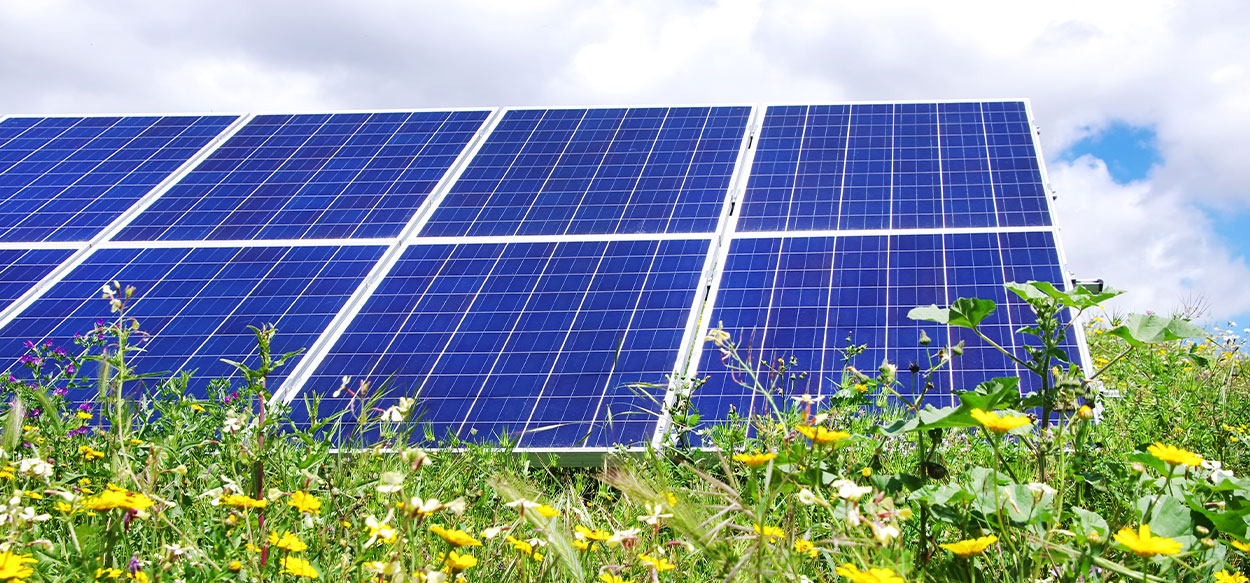Reconciling solar energy production and nature conservation: it’s possible!

Photovoltaic Energy: A Key Solution for the Energy Crisis and Climate Change
Photovoltaic energy represents one of the most promising solutions to address the energy crisis and combat climate change. In France, the development of ground-mounted photovoltaic plants plays a central role in the energy transition. But is it possible to reconcile this clean energy production with environmental and biodiversity preservation? The answer is yes! Indeed, with a thoughtful and nature-respecting approach, it is entirely possible to install solar panels without harming ecosystems.
Thoughtful Location: Choosing the Right Land
The first step in reconciling solar energy with environmental respect is the choice of location. It is crucial to identify ecologically sensitive areas, such as critical habitats for certain species, protected zones, or migratory corridors. Inappropriate placement of a photovoltaic park can disturb fragile ecosystems. Therefore, it is necessary to prioritize sites that do not require the destruction of sensitive natural areas.
Many photovoltaic projects focus on already degraded lands, such as polluted areas, old waste storage sites, abandoned quarries, or industrial wastelands. These spaces, with low ecological value, are rehabilitated and transformed into productive areas, generating green energy while contributing to the revitalization of abandoned territories.
Additionally, when the installation is on natural land, it is concentrated solely on areas with the least ecological impact, in order to minimize harm to biodiversity.
Minimized Impact on Flora and Fauna: Precise Studies and Measures
Before any project, an environmental impact study is systematically conducted to evaluate the effect of the park on flora and fauna. These studies, carried out over at least one year by independent ecologists, determine any risks of habitat alteration and ensure that the project respects the ecological characteristics of the land.
Furthermore, we apply the “Avoid – Reduce – Compensate” sequence in each project. This approach involves avoiding sensitive areas, reducing impacts by limiting work during critical periods for species (such as breeding or nesting), and, if necessary, compensating for impacts by implementing ecological projects, such as the restoration of ponds or natural habitats.
Sophie Jacquot, Environmental Monitoring Manager at Photosol, emphasizes:
“We focus on the quality of integration of our projects into the environment with the creation of a dedicated ‘environmental monitoring’ team. In addition to ensuring the consistency of our commitments across France, our team ensures the implementation and monitoring of various ecological measures called ‘avoid, reduce, compensate’. We are very enthusiastic when we encounter species within our parks: they are proof of the effectiveness of our prairie management under the panels.”
Reversible Installations: Long-term Respect for the Land
One of the main concerns regarding the ecological impact of photovoltaic parks is their sustainability and their impact on the soil. However, photovoltaic installations are designed to be reversible. In other words, at the end of their lifecycle, the installations can be easily dismantled, and the land returned to its original state.
The panels are mounted on lightweight structures, typically metal tables spaced several meters apart, allowing the soil to remain permeable and breathable. No concrete is used for the installation, preventing the artificialization of the land and ensuring that the soil can continue to live and regenerate after the operation.
Agrivoltaics: Combining Agriculture and Energy Production
Agrivoltaics, or the dual use of land for solar energy production and agricultural cultivation, is a perfect example of how solar energy can be harmoniously integrated into agricultural systems. By installing photovoltaic panels above crops or pastures, farmers can produce energy while maintaining their agricultural activities.
Early agrivoltaic experiments in France have shown that this model offers many benefits: it allows farmers to diversify their income sources while creating synergies between energy production and land cultivation. This approach also strengthens resilience against climatic challenges, as solar panels can provide natural protection against excess heat and rain, thereby helping preserve crops.
